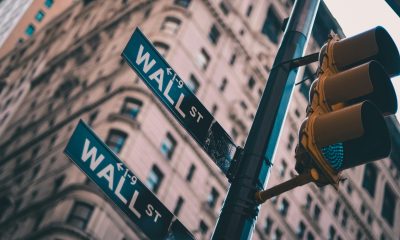Business
2024 Outlook: Expect the Most Expensive Stock Market in History
Economic growth must absolutely soar in 2024 to justify these valuation metrics. Or, the Fed must slash borrowing costs back towards ZIRP. But the latter scenario would only occur if the Fed was reacting to an economy that was falling apart, which cannot be good news for stocks. Yet, even in the former scenario, the Fed would not be cutting rates at all.

This year promises to be one of the most interesting years economically, politically, and market-wise in history. We have two significant global conflicts/wars ongoing, just as President Xi of China is reiterating his promise to annex Taiwan, and Kim Jong Un of North Korea threatens to wipe the US off the map.
Meanwhile, we have the most likely Republican candidate getting thrown off state ballots under the disgusting guise of trying to preserve democracy. The US is sadly in the process of becoming a banana republic. Wars and revolutions are not a tail risk. They are happening now and are likely to metastasize in 2024.
With this backdrop, we have the most expensive stock market in history prior to 2020
The price-to-sales ratio is 2.62, and the total market cap of equities is 176% of GDP; both figures are near record highs and dwarf the historical averages prior to the pandemic. And the equity risk premium is zero. Meaning the earnings yield of stocks is less than that yield offered by simply owning a risk-free T-bill. In other words, investors are not getting compensated at all for the extra risk of owning stocks over bonds.
We think earnings growth this year will be in the low single digits…at best. However, Wall Street gurus have penned in S&P 500 EPS growth of nearly 12% this year. But even if that growth is somehow incredibly achieved, the market has already priced in that hope. The forward 12-month P/E ratio for the S&P 500 is 19.3. This P/E ratio is above the 5-year average of 18.8 and above the 10-year average 17.6, according to FactSet.
Therefore, economic growth must absolutely soar in 2024 to justify these valuation metrics
Or, the Fed must slash borrowing costs back towards ZIRP. But the latter scenario would only occur if the Fed was reacting to an economy that was falling apart, which cannot be good news for stocks. Yet, even in the former scenario, the Fed would not be cutting rates at all.
Nevertheless, there are 3 rate cuts indicated by the Fed’s dot plot, and the 6 cuts are being priced in by the futures market. Therefore, even in the highly unlikely scenario of exploding GDP this year, it would probably entail rising rates instead of rate cuts, which would still provide a headwind for stocks.
The overhanging problem is that the Treasury must find a buyer for $7 trillion of government debt this year alone. $5 trillion must be rolled over, and $2 trillion will be needed to fund the annual deficit. This will put tremendous pressure on the bond market no matter what.
The month of March will be key time for markets in 2024
The reverse repo facility should get run down in at the end of the Q1 or the start of Q2. That easy liquidity for the already illiquid bond market will disappear. March is also the month when the BTFP is scheduled to expire. This entails the process of the Fed selling $133 billion in Treasuries and MBS that are sharply underwater back to the banks; and in exchange, the banks pay 100 cents on the dollar to the Fed, plus interest.
Powell needs to end this program to stop the rampant speculation on Wall Street and to ensure inflation retreats towards the 2% target. But doing so will wreak havoc on the regional banking system. His decision on this front will be critical.
The recession penciled in for last year did not materialize because of the massive fiscal spending and the bailout of the entire regional banking system; a.k.a. BTFP. However, the conditions for engendering a recession have not been resolved, they have been exacerbated—regardless of the soft-landing mantra prevalent in the MSFM. They are screaming goldilocks while in reality, the economy is more fragile today than ever.
- The longest and steepest yield curve inversion in 43 years continues to signal a sharp recession lies ahead; just at it continues to pressure bank earnings and lending practices.
- The Index of LEI confirms that the recession is still in the cards
- So does the NFIB survey
- Delinquencies and bankruptcies on the personal and corporate level are surging and that is pressuring consumption
- The refinancing of consumer and business debt at much higher interest rates inexorably marches on
- Banks continue to curtail C&I loans
- 14 straight months of a shrinking manufacturing sector
- And, the Fed is burning the base money supply by $95 billion each month
This does not guarantee a recession; but it does virtually guarantee that a booming economy is not in the bag. And that means investors should not blindly own the S&P 500 and trust in a bull market that never ends.
I very well understand that the Fed and Treasury will indeed seek to bailout every hiccup in the market and the economy. However, this is old news. The government rode to the rescue in the tech bubble recession at the turn of the millennia and during the global financial crisis and real estate crash of 2008. But neither ZIRP, or QE, or TARP, or any of the alphabet soup of bailout programs served to stop the 50% + debacle in markets.
These inflationary bailouts do tend to paper over the issues eventually; but not immediately. And of course, they result in more problems that turn out to be much more dire and intractable in the long run. In the vanguard of these problems is another round of asset bubbles, even more debt being incurred, and the condition of out-of-control inflation, which further eviscerates the middle class.
In sharp contrast to recent history, if the Fed and Treasury were to try and truncate the recession, debt default, and reconciliation of asset prices, by another round of money printing and spending this time around, they will be doing so with the sting of record-high inflation fresh in the minds of consumers and businesses and investors.
Therefore, the confidence in the world’s reserve status of USD and the US bond market could be obliterated. Meaning, what we could very well see is a condition where the economy enters a recession but long-term bond yields go up instead of down as is usually the case. Such an unprecedented and dangerous combination of higher borrowing costs in a faltering economy would result in carnage for stock valuations.
Financial conditions and credit spreads remain quiescent for now. Therefore, we remain net long in our Inflation/Deflation and Economic Cycle Model. But we remain ready to sprint for the narrow exit door once the sell signal is received.
My prediction and admonishment for 2024…be prepared for everything.
__
(Featured image by BoliviaInteligente via Unsplash)
DISCLAIMER: This article was written by a third party contributor and does not reflect the opinion of Born2Invest, its management, staff or its associates. Please review our disclaimer for more information.
This article may include forward-looking statements. These forward-looking statements generally are identified by the words “believe,” “project,” “estimate,” “become,” “plan,” “will,” and similar expressions. These forward-looking statements involve known and unknown risks as well as uncertainties, including those discussed in the following cautionary statements and elsewhere in this article and on this site. Although the Company may believe that its expectations are based on reasonable assumptions, the actual results that the Company may achieve may differ materially from any forward-looking statements, which reflect the opinions of the management of the Company only as of the date hereof. Additionally, please make sure to read these important disclosures.

-

 Crypto1 week ago
Crypto1 week agoAAVE Community Challenges Aave Labs Over Governance and Control
-

 Crowdfunding6 days ago
Crowdfunding6 days agoDeep Learning Italia Launches €400K Crowdfunding to Bridge Italy’s Tech Skills Gap
-

 Biotech2 weeks ago
Biotech2 weeks agoSpain Joins First EU Joint Clinical Assessment Under New Health Technology Regulation
-

 Crowdfunding1 week ago
Crowdfunding1 week agoa2censo Expands Crowdfunding Access for SMEs and New Investors

























